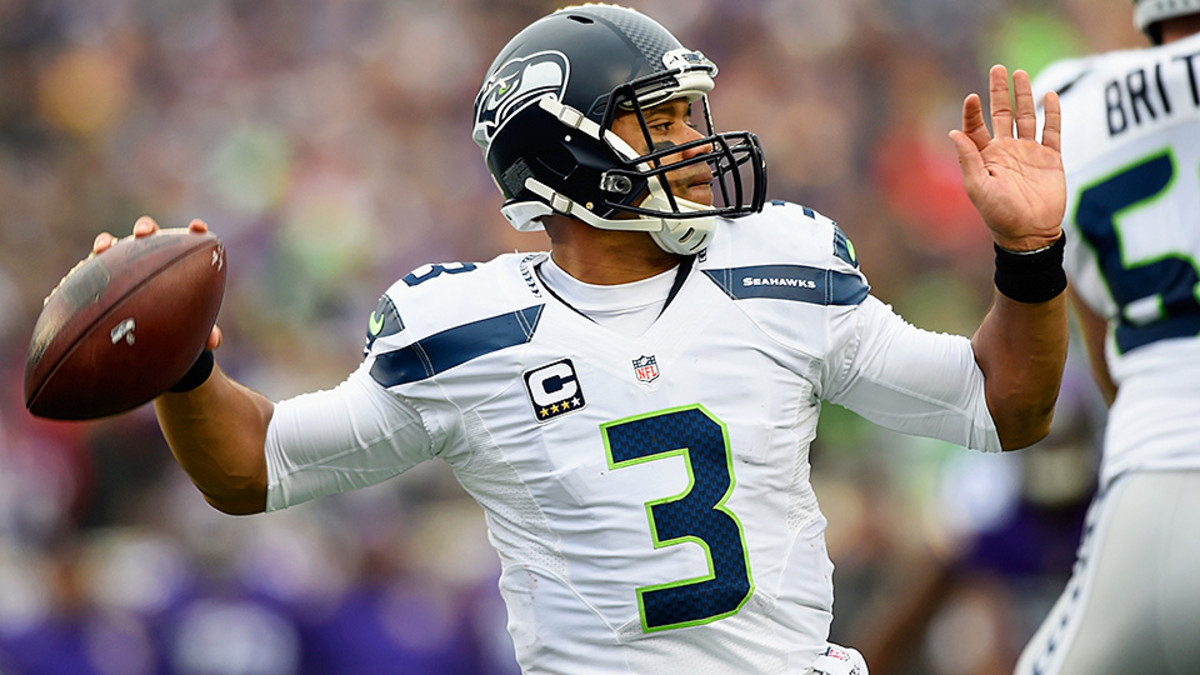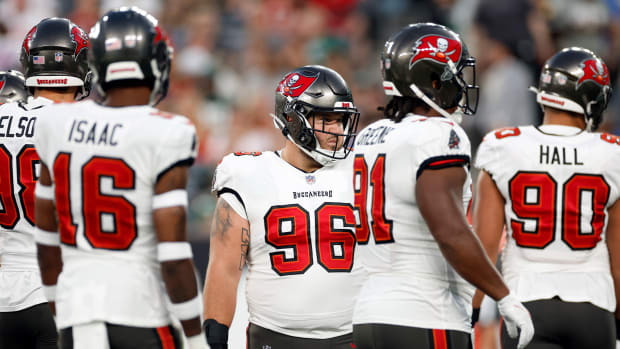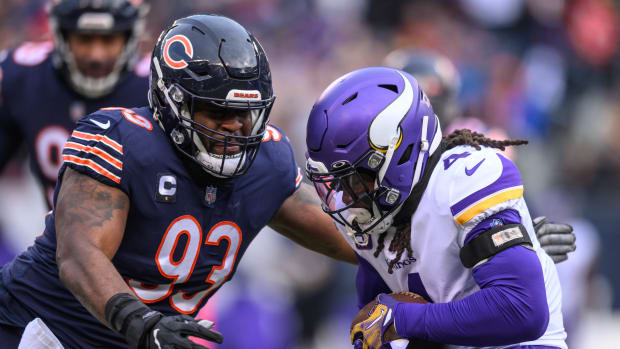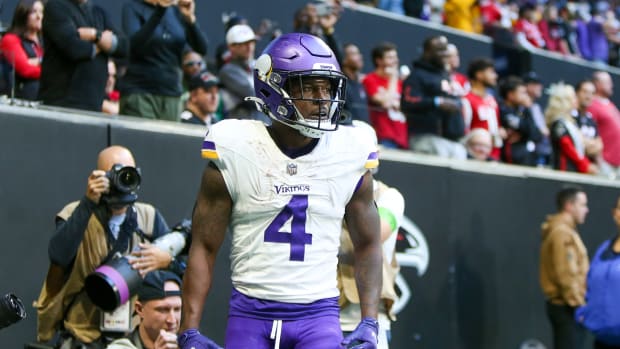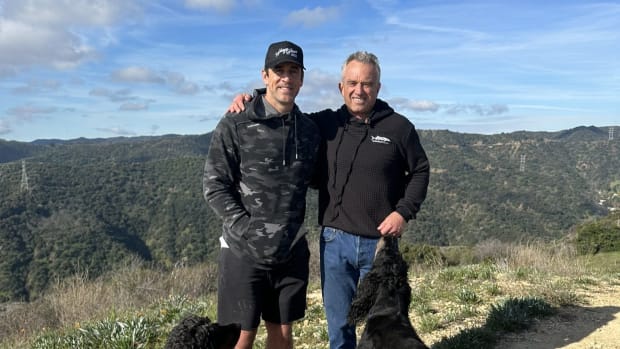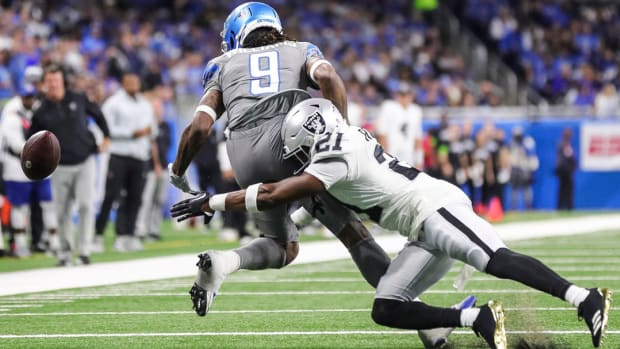Wilson's dominance in pocket crucial to Seahawks' offensive resurgence
RENTON, Wash. — Russell Wilson has been followed by two primary narratives throughout his football career. The first has been that at 5'10 5/8", he would never be tall enough to see over and through blockers and defenders. That's the main reason he was selected with the 75th overall pick in the 2012 draft, despite the first-ground grades given to him by some NFL teams. And as has been the case for mobile quarterbacks throughout NFL history, the thought has been that Wilson would never shake the default mechanism of bailing out of the pocket when he really should stay there.
Blanket Coverage: Bill O’Brien is more than just another Belichick protégé
And while both narratives were true to a point at times, anyone who watched Wilson's Wisconsin tape could see him throw spot-on 30-yard post routes to downfield receivers between the guards. When given consistent time in the pocket, Wilson has never had an issue standing in and making deep, accurate throws. The two 35-yard throws that sent the Seahawks to their second straight Super Bowl over the Packers in overtime of the 2014 NFC championship game were perfect examples of this. Wilson stood in and threw perfect bullets to Doug Baldwin and then Jermaine Kearse to end an 87-yard touchdown drive.
At the start of the 2015 season, there seemed to be a regression in Wilson's pocket ability, but it could be argued that behind Seattle's overwhelmed and outmanned offensive line, Wilson didn't have a pocket from which to throw most of the time. Then, it became much more about creating random explosive plays out of script, which is never a repeatable formula for success in the NFL.
But everything has turned around for Seattle's offense in the second half of this season. Replacing center Drew Nowak with Patrick Lewis has taken a lot of the protection calls out of Wilson's hands, allowing him to play more freely. And the increase in protection has been huge—Seattle's sack percentage has plummeted from 11.7% to 4.1% since Week 8, according to ESPN's Stats & Info. Thanks to that protection, plus Wilson's communication with his receivers and his own ability as a full-field reader and thrower, Wilson is now playing at a level we don't often see from any quarterback over a short space of time.
In the last three weeks, Wilson has completed 59 of 69 passes in the pocket for 810 yards, 10 touchdowns and no interceptions. And throughout the whole season in the pocket, he ranks first in the league in completion percentage (72.8%), first in passer rating (113.2) and second in yards per attempt (8.76). Not bad for a guy who is supposed to be too short and too balky to master the most important ability for any quarterback: the ability to throw with consistent dynamism and accuracy from the pocket. Everything else is gravy, and while it's really high-quality gravy in Wilson's case, that's the basis of his ascent to an entirely new level.
As a result, the Seahawks rank first in the NFL in Football Outsiders' Weighted DVOA metric, which measures opponent-adjusted strength with a priority on the season's second half, both overall and on offense. They've won four of their last five games after a 2–4 start, and they've become the team nobody else wants to deal with. Pete Carroll has had a strong defense throughout his tenure as Seattle's head coach—over the last two years, it's been historically good—but the ability to rely on a quarterback who seems to be getting everything right in the passing game? That's a new one, even as good as Wilson has been through most of his career. And as Carroll told me this week, it's got a lot to do with his quarterback's pocket dominance, something the coach always believed could happen.
Start ’Em, Sit ’Em: How to set your fantasy lineups for Week 14
“When you watched him in college, he was terrific in the pocket,” Carroll said. “So we never had any expectations that he wasn’t able to do that. He had a great offensive line at Wisconsin, they protected the heck out of him. They had a great offense and team and all of that, and he took full advantage of it. I think he’s the best in our system he’s ever been, and he’s shown that through the offseason and gave us that thought that he was really in command of the offense and he knew where everybody was going and all that, best that he had at any time before. And the ball just seemed to come out when we gave him the chances. What we’ve done is we’ve just zeroed in on stuff to make sure that we can maintain that rhythm that keeps the pass rush from being a factor, and he’s done really well with it.”
Wilson may not be able to see over blockers and defenders like Ben Roethlisberger or Aaron Rodgers can, but he's refined a compensatory skill mastered by his idol, the six-foot (and we're being generous there) Drew Brees. Like Brees, Wilson has a preternatural instinct and intelligence when it comes to sliding in and out of the pocket to catch throwing lanes just as they open—and it's just enough for him to keep making those dead-on deep throws.
“He’s had a knack throughout his career,” Carroll said. “We went back when we we’re drafting him, before the draft, and tried to figure if is he's going to get a lot of balls knocked down. He had a huge offensive line at Wisconsin, so that wasn’t a factor. His numbers were nowhere near an alarming number. I think he had five or six or something knockdowns in his senior season, which was better than a lot of other guys that were coming out. So, he does it because he understands how to connect through the available passing lanes, and he has a real good sense for that. And when he doesn’t he’ll move and do something. It’s not even an issue.”
Another non-issue for Wilson of late? The blitz. Over the last three games, he has a perfect 158.3 passer rating when defenses bring extra numbers to rush him. Blitz recognition and response have been underrated and rapidly developing parts of his game and it's really paying off.
“A lot of it is study throughout the week and just understanding coverages and where they’re going to be and what their approach is,” Wilson said Thursday. “What type of blitz it is. Just trying to pick that up and make sure you understand where their weakness is too. My belief is the more people they bring, the more green grass there is behind them. That’s kind of the thought process for me. I don’t shy away from a blitz at all. I think it’s a good thing, you can make a lot of explosive plays.”
Week 14 NFL Power Rankings: Gronk-less Patriots tumble three spots
Explosive plays indeed, and that's the toughest part of Seattle's offense to defend. Carroll and offensive coordinator Darrell Bevell have incorporated Wilson's ability to run with throwing in mind into the passing game over the last couple of years—basically, making those allegedly random explosive plays a real and (hopefully) repeatable part of the playbook. Wilson's scramble drills, which seem to go on forever at times, put extra stress on the defense because Wilson and his receivers are attuned to where he's going when he runs, and they've practiced how to respond with their route adjustments. Meanwhile, defenders who thought they were covering receivers for two or three seconds find themselves in a marathon as opposed to a sprint.
The combination of deep passes created out of that chaos, and the newly expanded defined structure, makes Wilson one of the most effective big--play throwers in the league. Wilson has thrown 47 pass plays of 20 yards or more this season, which ranks sixth in the NFL—but he ranks 35th in passing attempts per game. When it comes to bang for the buck on big plays, it would be hard to name more than a small handful of quarterbacks who do more.
Seahawks cornerback Richard Sherman, who faces this offense every day in practice and has seen it grow from the start, spoke fairly eloquently this week when asked why it's become so hard to defend. Basically, Wilson's newfound near-perfection in the pocket adds the X-factor which overwhelms the plans of his on-field enemies.
“Because you can’t find an answer,” Sherman said. “When the answer to the riddle used to be make him leave the pocket and you got him, or keep him in the pocket and you got him, or contain him... just keep him in there and you’ve got him solved. When that’s not the answer anymore, it’s a really dangerous offense. When he’s standing there confidently and delivering strikes to your receivers, you start to understand how dynamic our offense really is.”
It hasn't always been that way, and it's hard to say how long it will sustain at this level, but right now? The Seahawks have the best offense in the NFL, and for the first time, Russell Wilson is the key—especially from the pocket.
































